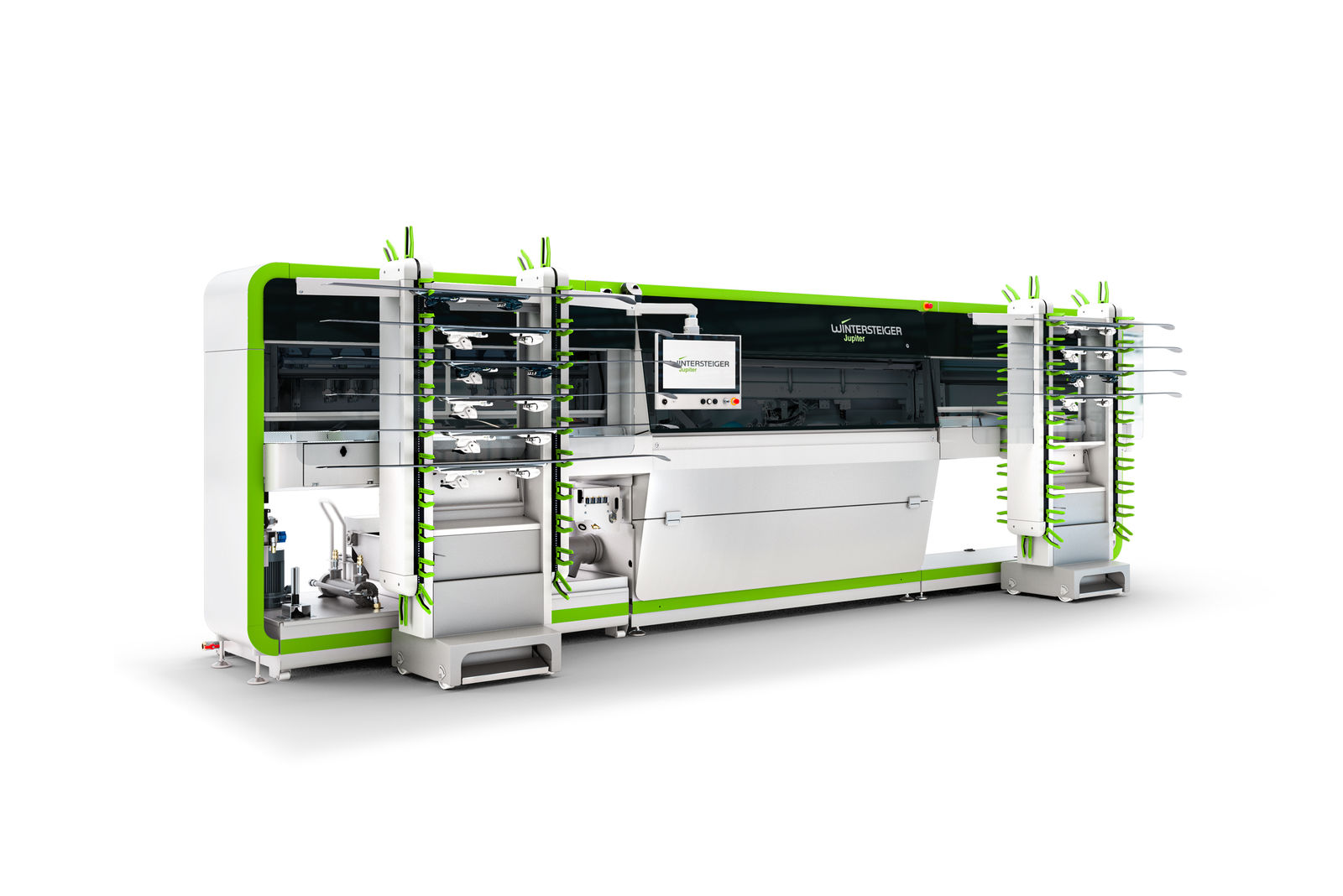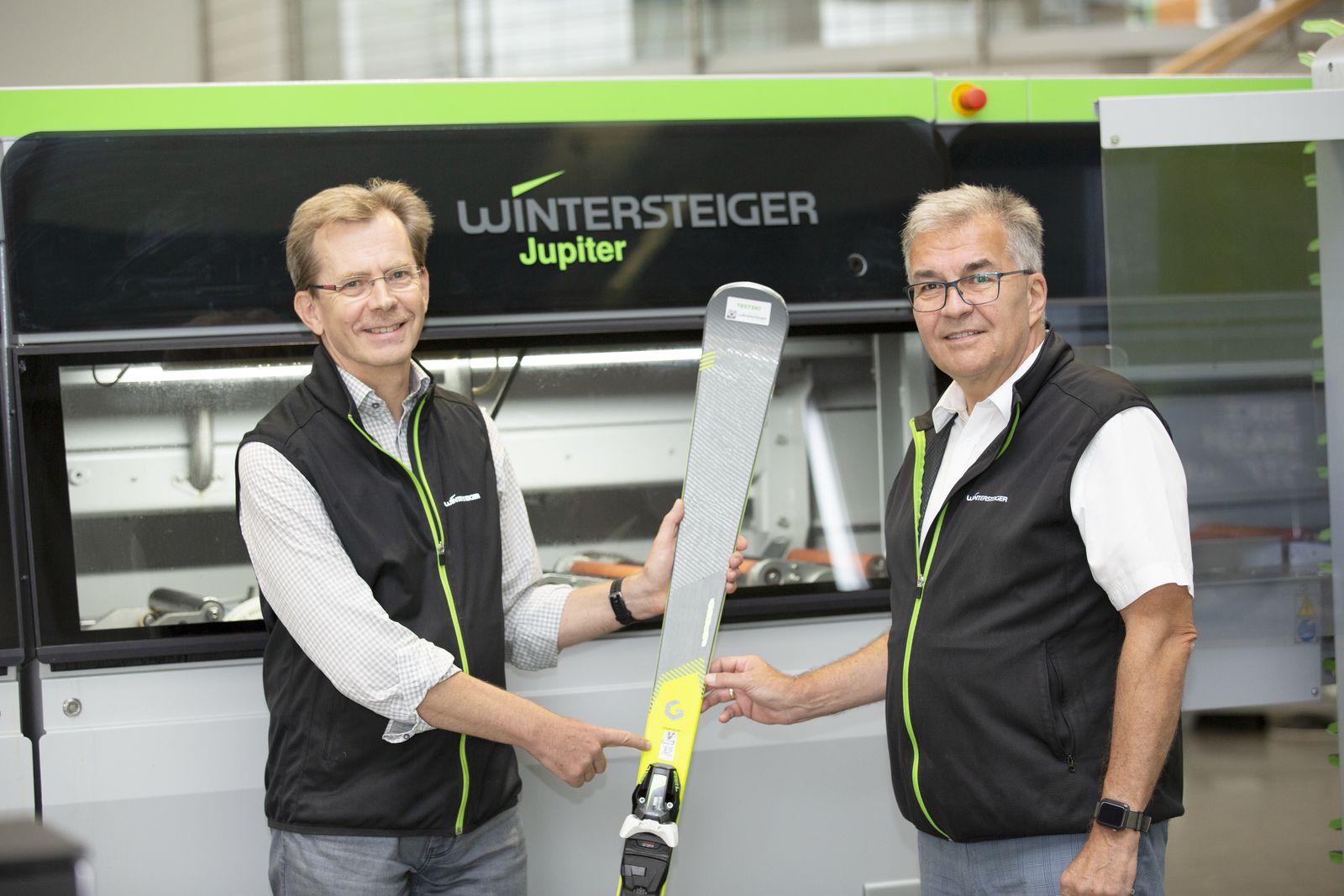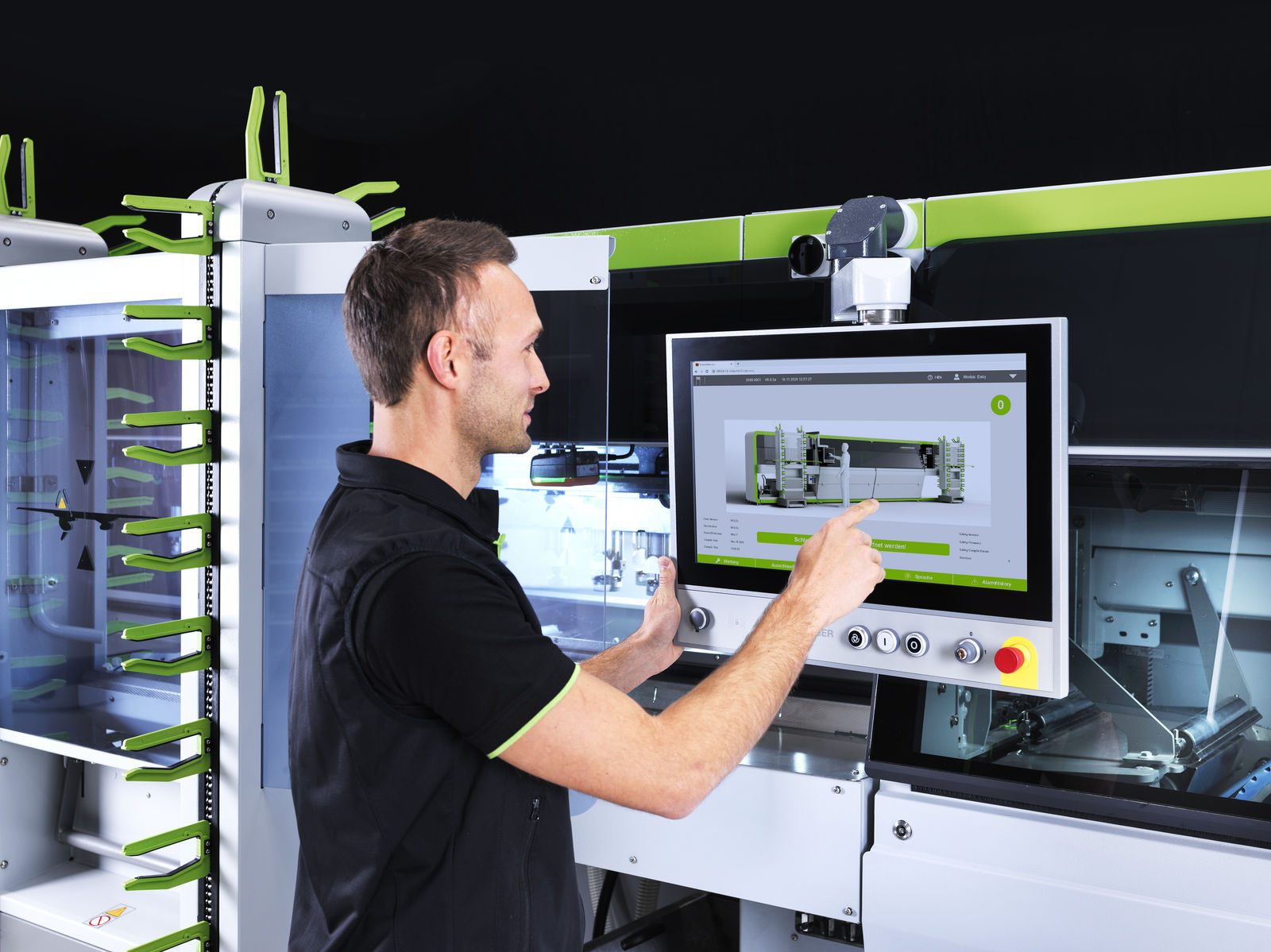Ski type, skill level and slope conditions are just three of many factors that play an important role in the ski tuning universe. To make sure its new generation of automated ski service machines is able to handle any ski preparation task that might be required, Wintersteiger implemented a highly flexible automation solution from B&R.
With the last gate in sight, the skier drops her knees low to the ground and leans her full momentum into the turn. Her skis roll onto their razor-sharp edges and slice into the steep and icy World Cup slope. As if on rails, she carves a tight arc around the gate before straightening out and setting her sights on the finish. Once again lying flat, the skis glide nearly friction-free as she pulls into a tuck and accelerates across the line.

Safe and fun
"It's easy to see how important perfectly serviced skis are for a pro athlete," says Johann Aigner, product manager for ski service machines at Wintersteiger. "But what many underestimate is how much safer and more enjoyable the experience can be for amateurs as well when their skis are optimally tuned to their skill level and the conditions on the mountain."
Wintersteiger's automated ski service machines have earned an excellent reputation worldwide and are used in sporting goods stores and rental shops as well as by professional racing teams. "We're proud of what we've achieved so far, but won't stop there," says Aigner. "The market demands machines that are even easier to operate, and which push speed and precision even further. Based on these requirements, we developed our newest generation of automated service stations – the Jupiter."
Camera detects ski
A key feature of the new machine is the ability to recognize the ski and automatically load the appropriate parameters. "This is done by scanning a barcode that has been attached by the rental shop or sporting goods store," explains Gerald Höckner, system developer at Wintersteiger. The machine then loads the parameters it needs directly from the ski rental software.
For barcode detection, the development team installed a movable sled on the machine, on which it mounted a camera that takes pictures of the ski. Initial attempts failed to deliver satisfactory results, however. "The cameras we tested were difficult to implement, since they had their own separate development environments. Another issue was that we weren't able to move the sled very quickly," explains Höckner.

Dirt is not an obstacle
The development team decided to test B&R's new Smart Sensor. "It was very straightforward," says Höckner, recalling the first live test. The B&R technician delivered the camera and connected it directly to the machine control network. "Within minutes, we were taking the first test photos. We were able to adjust the settings in B&R's Automation Studio, so we didn't need to deal with any additional tools."
"At first, we weren't sure if the barcode would be detected reliably," says Höckner. "When a ski comes straight off the slopes, it can be wet or dirty, so that's obviously a bit of a challenge." After a few software adjustments and the addition of a polarizing filter, however, the B&R vision system proved to be extremely reliable even under difficult circumstances.
Faster image acquisition
Since the motion control axes and camera are part of the same system, they can be synchronized with microsecond accuracy. That made it possible to move the sled with the camera much faster than expected and thus increase throughput.
Whether parameters are read from a barcode or entered manually by the operator, the Jupiter offers an almost unlimited number of processing options. Each machine consists of two to eight modules which can be combined as needed.
World-leading ski service technology
Wintersteiger offers modules for edge grinding, base grinding, waxing and much more. Most of the modules have received thorough upgrades compared to the predecessor machine. "We now offer an edge grinding module with V-Edge technology – a solution that is unique in the world," explains Aigner. The edges are ground at variable angles along the length of the ski to maximize both edge grip and easy control. "To put it simply: V-Edge delivers the ultimate skiing experience."

Modular software
The machine's customizability was a major challenge for the software developers. "We couldn't possibly write separate software for every potential variant of the machine," says Höckner. Instead, they took a modular approach. "That works really well with the B&R system: The first time we start up a newly assembled machine, the software automatically detects which modules have been used." That way, the end user will only be able to select programs and processing steps that the machine is actually capable of performing.
"User experience is always a top priority for us," says Aigner. "And in the case of an automated ski grinder, that can be a bit tricky." At a sporting goods store, a Jupiter machine may be operated by a new employee with no prior knowledge. A national ski team, on the other hand, might have someone standing at the same machine with decades of experience trying to tease out the last ounce of performance in world cup races decided by fractions of a second.
Once again, a modular approach was Wintersteiger's answer for the user interface as well. Easy mode allows the operator to choose between preset programs. Another option allows custom programs to be assembled from ready-made blocks. And for the absolute pros, it's possible to fine-tune every single parameter.
Live preview on the screen
The HMI application is based on B&R's mapp View software. "We put a lot of effort into perfecting the user interface," says Höckner. The software even generates a live preview of the base preparation results based on the current parameter settings, so the operator sees in advance what the structural pattern will look like on the ski.
When it became clear that the HMI application was growing too large for the originally planned PLC, the developers switched to an industrial PC as the machine controller. For the HMI application itself, the change had no impact at all. Thanks to the seamless scalability of the B&R system, the previously written software runs completely unaltered on the new hardware.

As many as 70 motion control axes, a machine vision camera, numerous I/O modules, a safety controller and a large operator panel are all connected to the industrial PC via the machine network. Wintersteiger has also connected an IoT gateway to the PC via OPC UA in order to offer its customers more advanced after sales service.
"We've had very enthusiastic responses to the Jupiter," says Aigner. "Thanks to B&R's modular automation system, we have managed to develop a machine that covers all needs – from quick service at a rental shop to high-end tuning for the racing sector."
Johann Aigner Head of Product Management Rent & Service Division SPORTS at Wintersteiger "The B&R vision sensor helped us achieve optimum throughput." |
Gerald Höckner System developer at Wintersteiger "The first time we start up a newly assembled machine, the software automatically detects which modules have been used." |